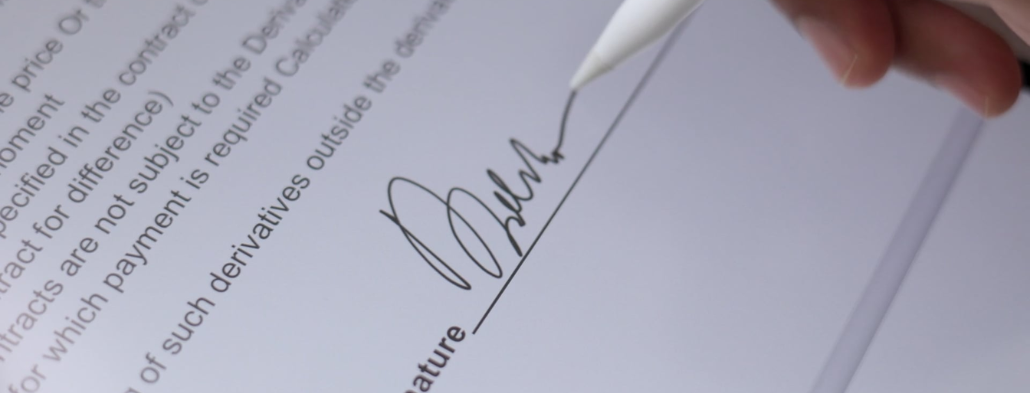Yes, as long as the e-signature solution complies with laws such as ESIGN Act, UETA, or eIDAS, the audit trail supports legal enforceability.
In the world of secure digital communication, electronic signature audit trails have emerged as a cornerstone for compliance, fraud prevention, and legal enforceability. At RSign, our globally trusted eSignature solution, we ensure that every signed document includes a comprehensive and tamper-evident audit trail that meets regulatory requirements and exceeds user expectations.
An electronic signature audit trail is a chronological record of the entire signing process, capturing key data points such as:
This audit log provides a transparent, verifiable, and secure record that supports the legal binding nature of electronic signatures.
In today's digital-first business environment, audit trails have become a regulatory requirement across numerous industries. They provide organizations with the ability to maintain transparency, ensure compliance, and protect against unauthorized access while creating legally binding digital signatures.
Electronic signature audit trails serve multiple critical functions in digital transaction management. Electronic signature audit trails provide crucial, clear evidence for digital transactions, detailing who signed a document, when, and how, which is invaluable during disputes.
Compliance and Regulatory Requirements: Many industries, particularly healthcare, financial services, and pharmaceuticals, require detailed audit logs to meet regulatory standards such as FDA 21 CFR Part 11, HIPAA, and SOX compliance.
Fraud Prevention: Comprehensive audit trails create multiple layers of verification that make it extremely difficult for bad actors to forge signatures or manipulate documents without detection.
Legal Evidence: In litigation scenarios, audit trails provide court-admissible evidence that can verify the authenticity and integrity of electronic signatures and signed documents.
Risk Management: Organizations can identify unusual patterns, track user activity, and implement stronger access controls based on audit trail data.
A robust signature audit trail must include specific data points to ensure comprehensive documentation of the signing process:
Signer Identity Information: Complete identification of all parties involved, including names, email addresses, and authentication methods used to verify identity.
Date and Time Stamps: Precise chronological records of when each action occurred during the signing process, typically recorded in coordinated universal time (UTC) to eliminate time zone confusion.
IP Address Tracking: Documentation of the IP addresses from which signers accessed and signed documents, providing geographic and network-level verification.
System Activities Log: Detailed records of all actions taken within the platform, including document views, downloads, signature attempts, and completion events.
Authentication Methods: Records of multi-factor authentication, biometric verification, or other security measures employed during the signing process.
Document Integrity Verification: Cryptographic hashes and digital certificates that prove the document hasn't been altered after signing.
Real-Time Monitoring Data: Continuous tracking of user interactions, including mouse movements, typing patterns, and time spent on each page of the document.
Organizations frequently question whether audited accounts and audit reports can be signed electronically. The answer is increasingly affirmative, provided proper safeguards are in place.
Audited Financial Statements: Most regulatory bodies now accept electronically signed audited financial statements when accompanied by comprehensive audit trails. The key requirement is ensuring that the electronic signature process meets the same standards of authentication and non-repudiation as traditional wet signatures.
CPA Firm Requirements: Certified Public Accounting firms can digitally sign audit reports using qualified electronic signatures that comply with relevant professional standards. The audit trail must demonstrate that the signing CPA was properly authenticated and that the document integrity was maintained throughout the process.
Board Approvals: Corporate boards can approve audited accounts electronically, with audit trails providing the necessary documentation for corporate governance requirements.
The implementation of comprehensive audit trails in electronic signature processes delivers substantial benefits across multiple dimensions:
Enhanced Security and Fraud Prevention: Audit trails create multiple verification checkpoints that significantly reduce the risk of document tampering or signature fraud. The detailed logging of IP addresses, timestamps, and user behaviors creates a comprehensive security framework.
Regulatory Compliance: Organizations can demonstrate compliance with industry-specific regulations by maintaining detailed records of all signing activities. This is particularly crucial for companies operating in heavily regulated sectors.
Legal Admissibility: Courts increasingly recognize electronically signed documents with proper audit trails as legally binding evidence. The comprehensive nature of digital audit logs often provides more detailed evidence than traditional paper-based processes.
Operational Efficiency: Digital audit trails eliminate the need for manual record-keeping and provide instant access to signing history, reducing administrative overhead and improving process efficiency.
Cost Reduction: Organizations can significantly reduce costs associated with paper storage, physical document management, and manual audit processes.
Contract Management and Compliance Monitoring: Use audit trails to track contract execution timelines, identify bottlenecks in approval processes, and ensure all stakeholders complete required actions within specified timeframes.
Risk Assessment and Pattern Analysis: Analyze audit trail data to identify unusual signing patterns, detect potential security threats, and implement proactive risk mitigation strategies.
Performance Optimization: Examine signing process metrics to identify opportunities for streamlining workflows, reducing completion times, and improving user experience.
Dispute Resolution and Legal Defense: Leverage comprehensive audit trails as evidence in contractual disputes, demonstrating the validity and authenticity of electronic signatures in legal proceedings.
Regulatory Reporting and Documentation: Generate compliance reports directly from audit trail data, streamlining regulatory submissions and audit preparations.
Electronic signature platforms typically maintain several types of audit trails, each serving specific purposes:
Transaction-Level Audit Trails: These focus on individual signing transactions, capturing all activities related to a specific document or contract.
User-Level Audit Trails: These track all activities performed by individual users across multiple transactions, providing insights into user behavior patterns.
System-Level Audit Trails: These monitor platform-wide activities, including system maintenance, security updates, and administrative actions.
Integration Audit Trails: These document interactions between the electronic signature platform and external systems, ensuring complete visibility into data flows.
RSign's advanced electronic signature platform automatically generates comprehensive audit trails for every digital transaction. The system captures and securely stores all relevant data points in real-time, ensuring complete documentation of the signing process.
Automated Documentation: RSign automatically records all system activities, user interactions, and authentication events without requiring manual intervention from users or administrators.
Tamper-Evident Storage: All audit trail data is stored using cryptographic protections that make it impossible to alter records without detection, ensuring the integrity of audit logs.
Comprehensive Reporting: The platform provides detailed audit reports that can be customized for specific compliance requirements or legal proceedings.
Integration Capabilities: RSign's audit trail functionality integrates seamlessly with existing document management systems and compliance frameworks.
Real-Time Accessibility: Authorized users can access audit trail information immediately, enabling rapid response to compliance inquiries or security concerns.
RSign's audit trail technology represents the gold standard in electronic signature documentation, providing organizations with unparalleled visibility into their digital transaction processes. The platform's sophisticated audit trail system goes beyond basic logging to deliver actionable insights and rock-solid compliance documentation.
Advanced RSign Audit Trail Capabilities
Comprehensive Transaction Logging: RSign captures every interaction within the signing process, from initial document access to final completion. This includes detailed records of document views, time spent on each page, authentication attempts, and all user actions throughout the signing journey.
Multi-Layer Authentication Tracking: The platform documents all authentication methods employed, including email verification, SMS codes, knowledge-based authentication, and biometric verification. Each authentication event is timestamped and linked to specific user actions.
Geographic and Network Intelligence: RSign's audit trails include detailed IP address tracking with geographic location data, enabling organizations to verify that signatures were executed from expected locations and detect potential security anomalies.
Device and Browser Fingerprinting: The system captures detailed information about the devices and browsers used during the signing process, creating an additional layer of verification and fraud prevention.
Real-Time Compliance Monitoring: RSign continuously monitors signing activities against predefined compliance rules, automatically flagging any deviations or suspicious patterns for immediate review.
RSign not only meets but exceeds global digital signature audit trail standards, giving organizations the confidence to scale digital workflows with full transparency and security.
Yes, as long as the e-signature solution complies with laws such as ESIGN Act, UETA, or eIDAS, the audit trail supports legal enforceability.
RSign uses encrypted, tamper-evident logs and offers multi-factor authentication and access controls to ensure security and integrity.
Yes. Each signed document in RSign includes a downloadable audit trail that remains accessible at any time.
Yes, organizations can customize which events and data points to capture based on compliance needs.

Electronic Signature | eSignature

RSign Legalities | eSignature

Digital Transaction Management | eSignature